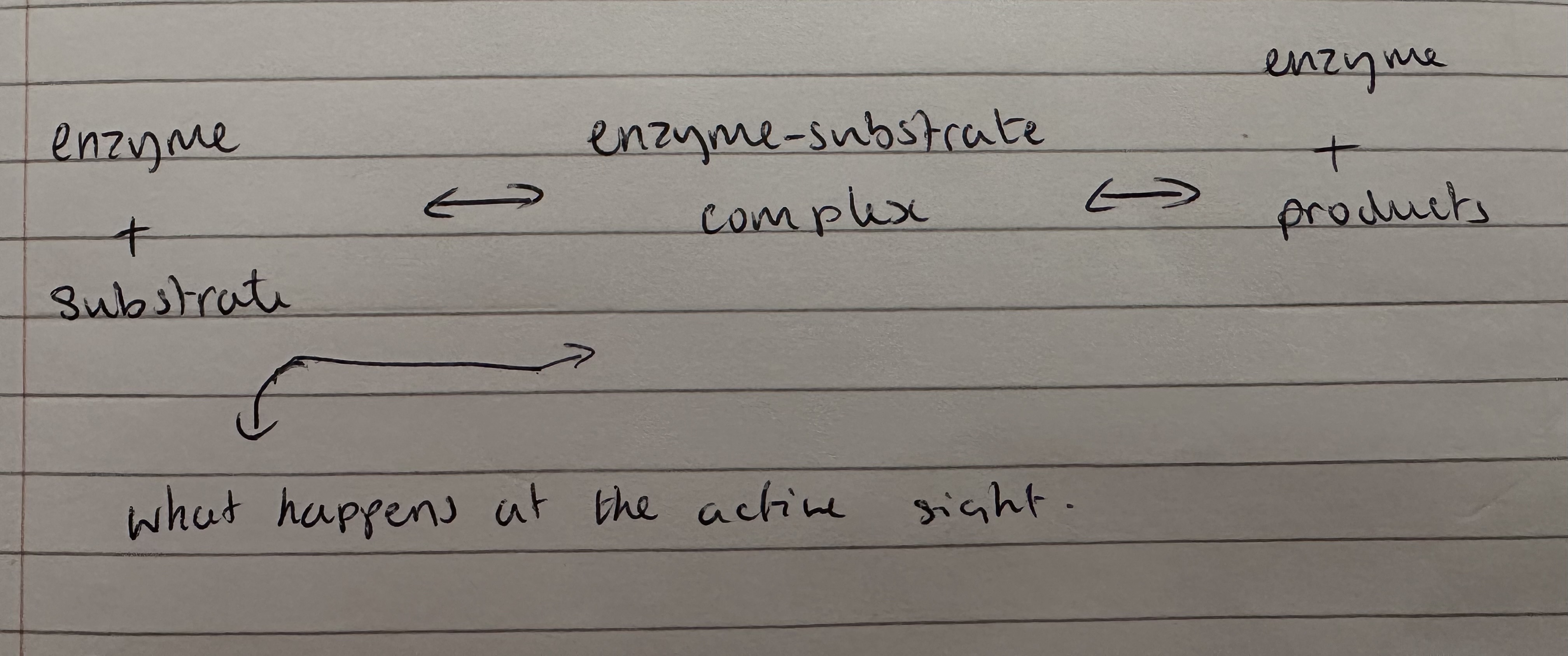B3: The Human digestive system
1/32
Earn XP
Description and Tags
Name | Mastery | Learn | Test | Matching | Spaced |
|---|
No study sessions yet.
33 Terms
Need for food
Our food is the source of energy and building blocks for new growth
One type of carbohydrate
Starch (large, insoluble)
The other type of carbohydrate
Sugar (soluble)
Carbohydrates use in the body and sources
Energy - bread, pasta, potato
Protein use in the body and sources
Growth and repair - meat, eggs, fish, beans (soy), nuts
Waters use in the body and sources
Major components of bodily fluids as a solvent - most foods e.g. fruit, veg, drinks
Minerals use in the body and sources
Maintains good health - fruit and veg
Fibres use in the body and source
Healthy colon, provides bulk to keep the intestines healthy - Veg, beans, cereals
What is Benedict’s solution used to find and give the colour change in a positive reaction
Glucose/sugar - blue to brick red after heating
What is biuret’s solution used to test for and give the colour change in a positive reaction
Protein - blue to purple/ lavender
What is iodine used to test for and what is the colour change when the reaction is positive
Starch - orange/brown to blue/black
What is ethanol used to test for and what is the colour change for a positive reaction
Lipids (fat) - colourless to milky white layer formed
Why do we need to digest food
Because the food we eat are made of large, insoluble molecules
Why do nutrients need to be smaller, soluble molecules?
To diffuse through the walls of the small intestine
Then into the blood steam
Define mechanical digestion
By the physical action of the teeth and stomach, pulvering the food
Define chemical digestion
By the action of enzymes found in the digestive organs
What are enzymes?
Enzymes are catalysts. This means they speed up reactions.
Where are enzymes found and what are they made up of?
In the cytoplasm of cells, intestines, stomach and mouth. They are made up of amino acids.
Why can enzymes be reused?
Because they are not used up in reactions
what happens at the active sight
enzyme + substrate
Enzyme-substrate complex
Enzyme + products

Give the name of an enzyme, its substrate and the products
Amylase (Carbohydrase) break starch, into sugars (glucose)
Give the name of another enzyme, its substrate and the products
Protease break proteis into amino acids
Give the name of the final enzyme, its substrate and its product
Lipase break fats into fatty acids and glycerol
How does an enzyme work?
The enzyme has an active sight that fits only one substrate. The substrate binds in the active sight like a key in a lock and the enzyme breaks it down into smaller parts
3 ways to measure the rate of enzyme activity:
timing until a certain volume/mass of substrates is broken down
Rate can be calculated using time
Measuring the change in pH over time (proteins and fats both produce acids, so the pH drops)
How is an enzyme denatured?
If the temp changes sufficiently beyond and enzymes optimum, the shape of the enzyme irreversibly changes. The shape of the active sight changes, meaning it can no longer work as the substrate cannot fit into the active sight.
One way fats are divested
Firstly, Bile (released by the gull bladder) allows the fat to “mix” with water by breaking the fat into smaller droplets. This is called emulsification.
The other way fats are digested
Secondly, the divesting enzyme lipease, break each fat molecule into smaller glycerol and fatty acid molecules.
Roles of hydrochloric acid (2 roles)
kills bacteria in food
Provides the best conditions for protease enzymes to work in (pH 2 - very acidic)
Where are analyse (carbohydrase) produced? (3)
Silvery glands, pancreas, small intestine
Where are lipease produced? (2)
Pancreas, small intestine
Where are protease produced in? (3)
Stomach, pancreas, small intestines
Name two ways the small intestines are adapted for efficient absorption of digested food
Large surface area (due to cilli and micro villi) and thin, permeable walls.